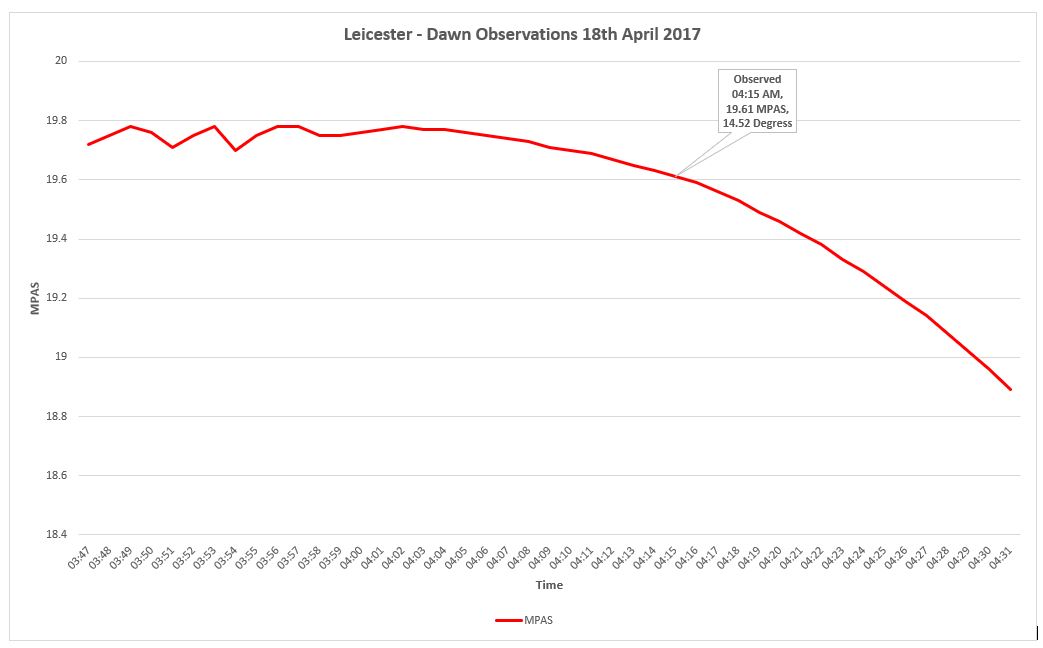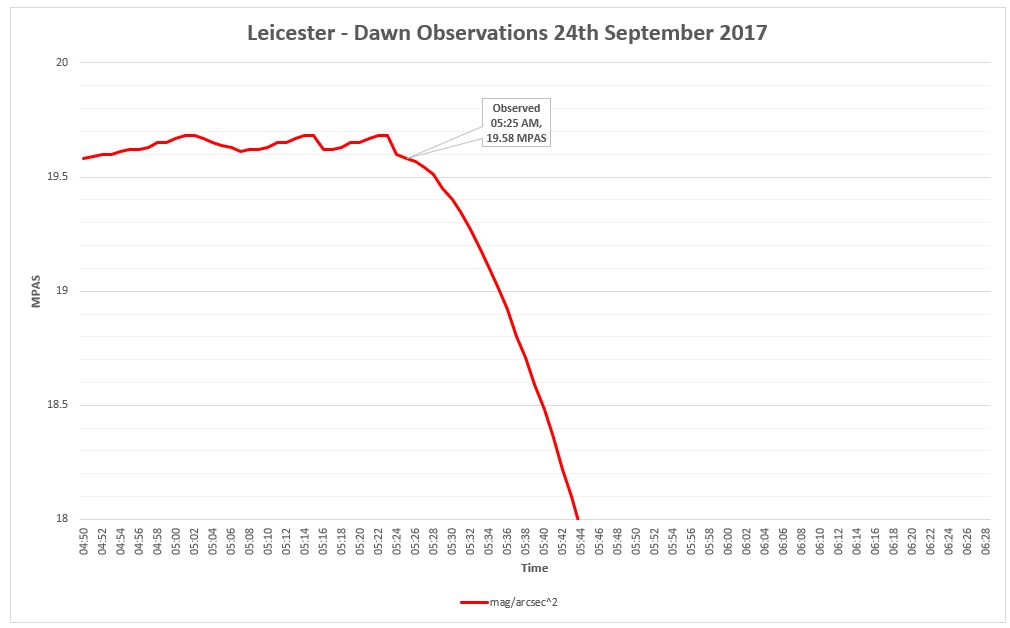Throughout the project, the continuous data logging from the Sky Quality Meter (SQM) was complemented by naked eye observations. In all, observations were made on 24 occasions throughout the year with some resulting in negative observance of the dawn.
SQM data when dawn was witnessed by our observers for a sample of days during the project can be seen below:
[Click Image to Expand]
Sun reaches depression angle of 18° at 3:43AM BST but MPAS does not start to decrease (tipping point) until 4:04AM BST with Subh al-Sadiq (dawn) being observed at 4:15AM BST
[Click Image to Expand]
Ramadhan 1439 fell in a period where the sun did not reach a depression angle of 18° and the alternative Islamic methods of Nisf al-Layl (Middle of Night) or Aqrab al-Ayyam (Last known date) were using used to establish Sehri by many. There was no changes in MPAS reading until 2:34AM BTS with Subh al-Sadiq (dawn) being observed at 3:07AM BST
[Click Image to Expand]
Sun reaches depression angle of 18° at 1:54AM BST but MPAS does not start to decrease (tipping point) until 2:29AM BST with Subh al-Sadiq (dawn) being observed at 2:52AM BST
[Click Image to Expand]
Sun reaches depression angle of 18° at 3:00AM BST but MPAS does not start to decrease (tipping point) until 3:25AM BST with Subh al-Sadiq (dawn) being observed at 3:46AM BST
[Click Image to Expand]
Image taken 3 minutes after Subh al-Sadiq (dawn) observed.
[Click Image to Expand]
Sun reaches depression angle of 18° at 4:57AM BST but MPAS does not start to decrease (tipping point) until 5:22AM BST with Subh al-Sadiq (dawn) being observed at 5:25AM BST
Considerations when conducting naked eye observations:
- Pick a location east of your city (for dawn observations)
- Ensure there is no light pollution (street lights, dwelling etc) in an easterly direction
- Ensure it a relatively flat in the easterly direction
- Although observations can be done during the middle days of the lunar month (12th to 18th), it more difficult due to moonlight and so should be avoided
- Arrive at least 15 minutes before your observations is to start
- Let your eye adjust to the darkness
- Avoid looking at your phone or other light sources
- Keep a mental record of the light conditions as you are working on a sliding window where what you saw two or three minutes previously was the start of the sky getting lighter
- Subh al-Sadiq (dawn) is the point as which first light spreads across the horizon
What we learn from the observations:
- Subh al-Sadiq (dawn) is occurring later than 18°
- Subh al-Sadiq (dawn) is observed after the light tipping point
- When Subh al-Sadiq (dawn) is observed with the naked eye the MPAS readings are in the range of 19 to 20 MPAS






